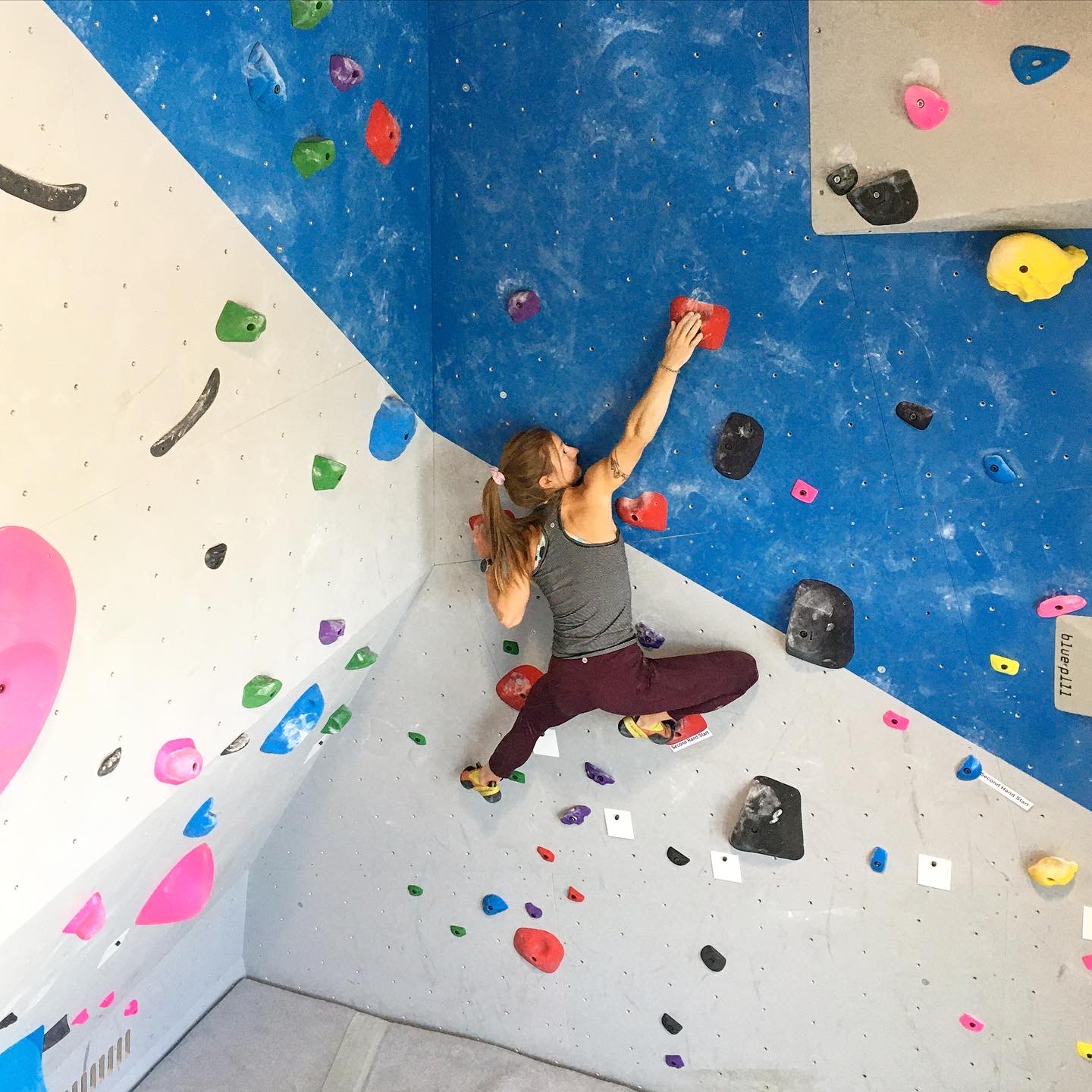Shedding “Light” on Eating Disorders in Climbing
Tuesday, February 23rd, 2021
There’s a phrase common in recovery circles that says, “you’re only as sick as your secrets”. Addictions notoriously thrive in situations of silence. They are able to hide beneath deep layers of shame and fear that can perpetuate the cycle over years, lifetimes, and even generations – all because of the deep need for protection.
Addictive behaviors both create and feed on the idea of protection. They serve as a shield, deflecting danger through compulsive actions and choices. Danger can be anything the brain perceives as a threat, from trauma, loss, and change to stress or intense emotion. Hiding behind monotony, no matter how self-destructive, at least offers an opportunity to dull all those sharp edges. It’s like bending down to look at one spark on the ground when the whole forest is on fire behind you. Willful ignorance sometimes feels a whole lot safer than acknowledging the real problem at hand.
But the behaviors need protection too. They only work to protect us when we protect them from scrutiny. Shining the light on the desperate things we do to maintain some semblance of expectation or control chases them away, and we’re left with nothing to distract us from that raging forest fire. The fire deserves our attention, though, and the only real way out is through it.

Athletes in particular are familiar with at least one kind of addiction like this, and climbers are finally beginning to break the silence that’s been covering it up. Eating disorders are rampant in sports like climbing that depend on a careful dance with gravity. It’s easy to blame weight for difficulties in performance or the anxieties of being on physical display, when the real problem lies much more in how we view and treat ourselves under stress.
Climber and filmmaker Caroline Treadway recently released the documentary “Light” to start a dialogue about these secrets in climbing. Several big names in the sport, from a wide range of backgrounds, pepper the film with enough stories to prove a link between climbing as an institution and a dangerous number of eating disorders. The main reason being: it works (at first).
Between the lure of a greater strength-to-weight ratio and the strangely soothing nature of starvation, eating disorders take root because they seem effective. Climbers often find that shrinking and numbing ourselves does help improve athletic performance. It’s easier to fight gravity if there’s less to pull up the wall, and the mental fog makes it hard to care about anything else that could distract from the minutiae of training. We might even thrive as athletes for a while, determined and laser-focused. Plus, the eating disorder becomes a powerful coping mechanism for all kinds of life stressors that arise or lie in wait. The whole experience feels a bit like developing a secret superpower.

Emily Harrington speaking in the film about her experience with an eating disorder as a professional climber.
That is, until the losses begin to accumulate at the drop of a hat. Sickness, injuries, fatigue, organ damage, bone loss, depression, anxiety, isolation, and plenty more disasters in the making line up one after another as soon as we start to think that we’ve got this whole game figured out. These consequences vastly outweigh any perceived benefits that might crop up.
Each of the climbers in “Light” recounted their story along a similar timeline. All of their experiences began with the best of intentions and brief success, quickly followed by a steep slide in everything that they had been looking to improve. The rest of their lives then crumbled to pieces as social, physical, and mental needs all fell to the wayside in the pursuit of the only thing that mattered anymore: the obsession with meticulous eating and training.
My own disorder doesn’t trace straight back to climbing, but the same drive took control as soon as athletics did come into the picture. Do more, be better, work harder, need less, give it all, take control, look the part, earn your place. That kind of motivation helped shape me into more of an athlete than I’d known I could or even wanted to be, but that’s all there was room for. I lost every other aspect of my identity, friendships by the handful, my sense of reality or priority, and many important aspects of my health to cap it off. I’m still struggling to tease out pieces of my true self that hide behind the kind of hyperactive perfectionism that my eating disorder thrives on.
However, no matter how long the recovery process may take, it’s one well worth the effort. Each of the climbers that take part in the film emphasize that their lives on the whole – as athletes and way beyond – have dramatically improved since turning towards recovery. That choice comes with a host of new challenges as they buck expectations when it comes to body size, energy intake, training strategies, and life structure. Recovery into a world that glorifies harmful behavior like restrictive dieting, weight manipulation, and workaholic habits can sometimes feel even harder than just staying sick. But those who’ve spent any time in that position have learned the hard way that not much of worth can actually be accomplished on an empty stomach in a stressed body.

Kai Lightner, another professional climber featured in “Light”, working out the beta at a competition.
Even then, eating disorders are mental illnesses first and foremost. External behaviors act as a vessel for internal distress. Some of the worst symptoms are those that attack the mind. It’s hard to think straight amid the mix of brain fog and thought spirals, and it’s often easier to just cut ties with the outside world than try to break the rules that make us feel safe. The loneliness weighs more than anything we might be trying to lose from our bodies. The more rigid those rules, the shorter our leash and the smaller our world.
Even if an athlete stuck in that tight web could actually find some version of success in the long run, without risking their lives or constantly facing injury and sickness, the mental toll would cause just as much harm. Eating disorders are the most deadly of all mental illnesses across the board, and that’s not just from organ failure. Living in a cage doesn’t feel much like living, after all.
The only way back to a well-rounded life is through recovery. Not only have the incredible athletes in Treadway’s film rediscovered their passions and abilities in climbing, they’ve realized that being an athlete involves much more than the time that they spend training. The balance and trust that they have developed in themselves as part of the recovery process has made them into better athletes, but also the best versions of themselves on and off the wall.
A big-picture mentality allows us to see how athletic goals make up only a portion of who we are as individuals, and that we have more to contribute to the world beyond those achievements alone. Recovery expands our identities from “athlete” to “athlete, and…”, which in turn helps us to find more value in everything that we do rather than squeeze ourselves into stifling boxes. Claiming that value builds us into higher quality athletes, and leaves us with enough energy to spend elsewhere.

Still finding my happy place on the wall.
“Light” gives climbers that have spent years wading through the muck a platform to help change the narrative around the true meaning of health in athletics. Their stories demonstrate how easy it is to slip into behaviors that may smooth out the bumps on the surface but dig much deeper holes further down the line. The wide variety of athletes who appear in the film also remind us that eating disorders do not discriminate. Not only are these illnesses about so much more than just performance or body image, they also don’t have a specific “look”. They manifest in a wide range of body types and personas, and don’t always result in the drastic physical changes that we usually picture. It’s impossible to tell from the outside who might be suffering from an eating disorder, and impossible to define how exactly anyone’s individual experience may present. The sooner we normalize these realities, the easier it will be to diagnose and treat anyone in need.
Climbing is certainly not the only sport to suffer from the issues that “Light” so eloquently addresses, and the film does not claim to have discovered some brave new solution. More importantly than that, it tackles a topic that has managed to fly under the radar for nearly the full lifespan of climbing as a sport. We can’t take back the degree of damage that disordered mindsets and expectations have already inflicted on climbers. It’s now our job to educate, discuss, and change the narrative from here on out. As a youth coach and in tenuous recovery myself, I have made it my overarching mission to foster an environment that supports climbers exactly as they are. Whatever body and mind we naturally bring to climbing is the best contribution that anyone can make to this sport.
No one picked up climbing with the intention to develop an eating disorder from it. That’s not the point of this film, or this post. Climbing has taught me some of the most powerful life lessons I could ever have imagined, and I do believe that it has uncovered strength in me that I might not have found otherwise. That strength may even be a large part of the reason that I have been able to fight so hard for recovery. Maybe it’s such a strong appreciation for the best sides of climbing that guide us to share about its shadows, to improve the sport and the community that we care so much about. With the momentum from projects like “Light”, we can begin to heal.